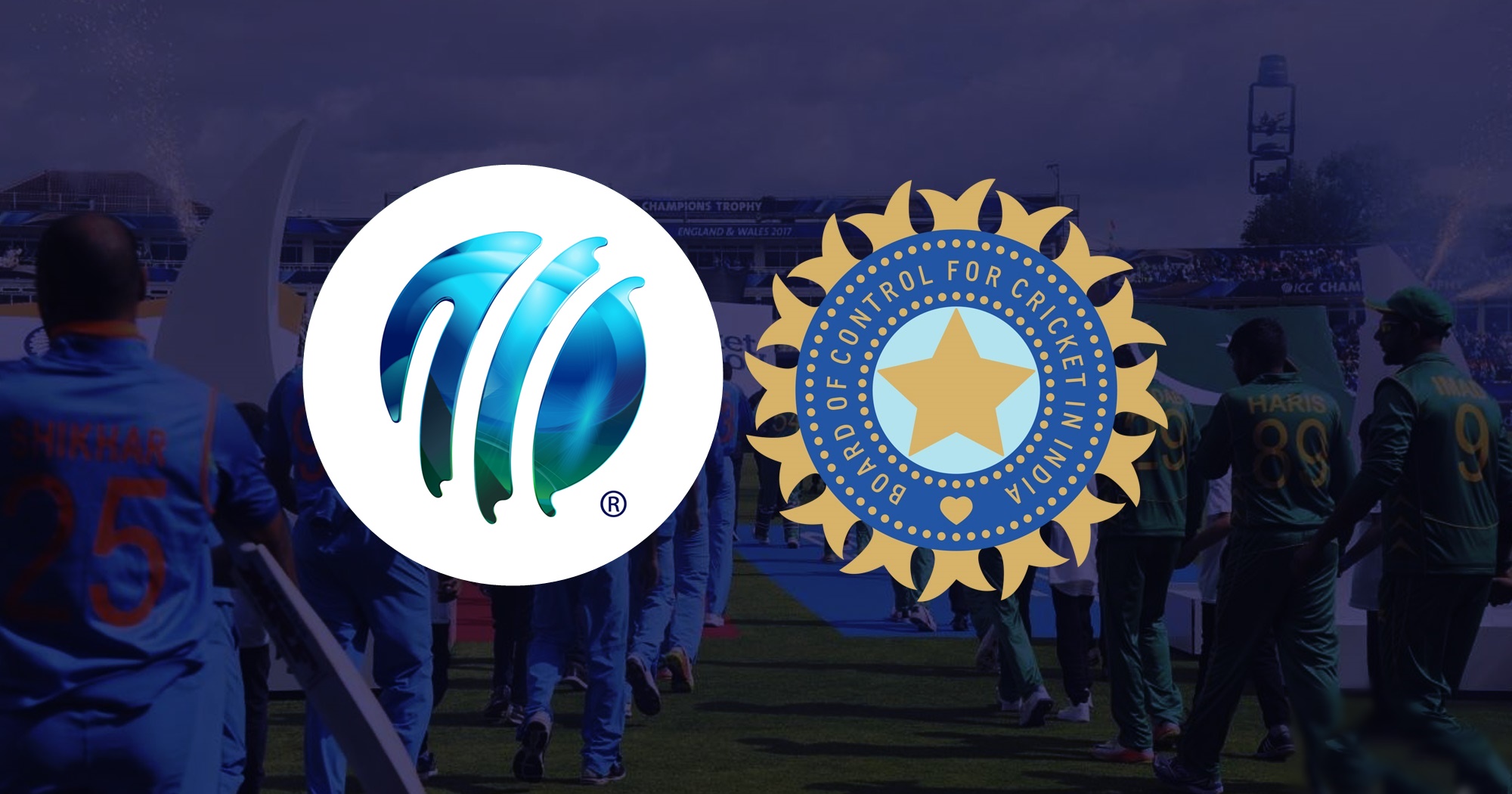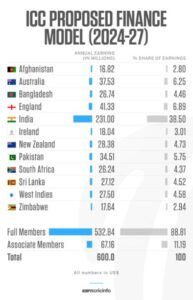 The ICC’s next revenue-distribution model looks set to confirm the Board of Control for Cricket in India (BCCI) as the only really big player in the game, with the Indian board projected to take home nearly 40% of the ICC’s net surplus earnings from its next four-year commercial cycle. The new model, currently at a proposed stage and seen by ESPNcricinfo, draws from much of the rationale that underpinned the short-lived Big Three takeover in 2014, but as far as take-home earnings go, it is more the Big One. The BCCI stands to earn approximately US$230 million per year between 2024-27 – or 38.5% of the ICC’s annual earnings of US$600 million. That dwarfs the next-highest earner, the ECB, in this proposed model: the ECB could earn US$41.33 million – or 6.89% – of the ICC’s earnings. CA, the third member of the original Big Three, comes next, and could get US$37.53 million (6.25%). The only other board projected to make over US$30 million among the remaining nine Full Members is the PCB, which could receive US$34.51 million (5.75%). The earnings of the remaining eight Full Members are below 5% (see table below). Of the US$ 600 million projected pool, the 12 Full Members will get US$532.84 million (88.81%), with the remaining US$67.16 million (11.19%) going to the Associate Members.
The ICC’s next revenue-distribution model looks set to confirm the Board of Control for Cricket in India (BCCI) as the only really big player in the game, with the Indian board projected to take home nearly 40% of the ICC’s net surplus earnings from its next four-year commercial cycle. The new model, currently at a proposed stage and seen by ESPNcricinfo, draws from much of the rationale that underpinned the short-lived Big Three takeover in 2014, but as far as take-home earnings go, it is more the Big One. The BCCI stands to earn approximately US$230 million per year between 2024-27 – or 38.5% of the ICC’s annual earnings of US$600 million. That dwarfs the next-highest earner, the ECB, in this proposed model: the ECB could earn US$41.33 million – or 6.89% – of the ICC’s earnings. CA, the third member of the original Big Three, comes next, and could get US$37.53 million (6.25%). The only other board projected to make over US$30 million among the remaining nine Full Members is the PCB, which could receive US$34.51 million (5.75%). The earnings of the remaining eight Full Members are below 5% (see table below). Of the US$ 600 million projected pool, the 12 Full Members will get US$532.84 million (88.81%), with the remaining US$67.16 million (11.19%) going to the Associate Members.  The overall annual figure is based on the estimated earnings of the ICC – over US$3.2 billion – from the sale of its media rights alone, which recently, for the first time, were sold across five separate regions globally including the Indian market. The vast bulk of that money has come from the sale of rights in the Indian market, where Disney Star* paid just over US$3 billion for four years. The four pillars of the proposed model The proposed model was developed originally by an ICC team and then worked on by the governing body’s finance and commercial affairs (F&CA) committee, before being discussed by the ICC Board this March. At that meeting, it is understood, only some details of the model were shared, including the criteria by which each Full Member would be graded when the distribution was calculated. The paper detailing the proposed model was circulated to the Full Members and board directors thereafter. Those criteria – “component weightings”, the model calls them – are:
The overall annual figure is based on the estimated earnings of the ICC – over US$3.2 billion – from the sale of its media rights alone, which recently, for the first time, were sold across five separate regions globally including the Indian market. The vast bulk of that money has come from the sale of rights in the Indian market, where Disney Star* paid just over US$3 billion for four years. The four pillars of the proposed model The proposed model was developed originally by an ICC team and then worked on by the governing body’s finance and commercial affairs (F&CA) committee, before being discussed by the ICC Board this March. At that meeting, it is understood, only some details of the model were shared, including the criteria by which each Full Member would be graded when the distribution was calculated. The paper detailing the proposed model was circulated to the Full Members and board directors thereafter. Those criteria – “component weightings”, the model calls them – are: - Cricket history
- Performance in both men’s and women’s ICC events over the last 16 years
- Contribution to the ICC’s commercial revenue
- And, an equal weightage for the status of being a Full Member
Source: https://newsroom.gy/2023/05/10/bcci-pro ... nce-model/